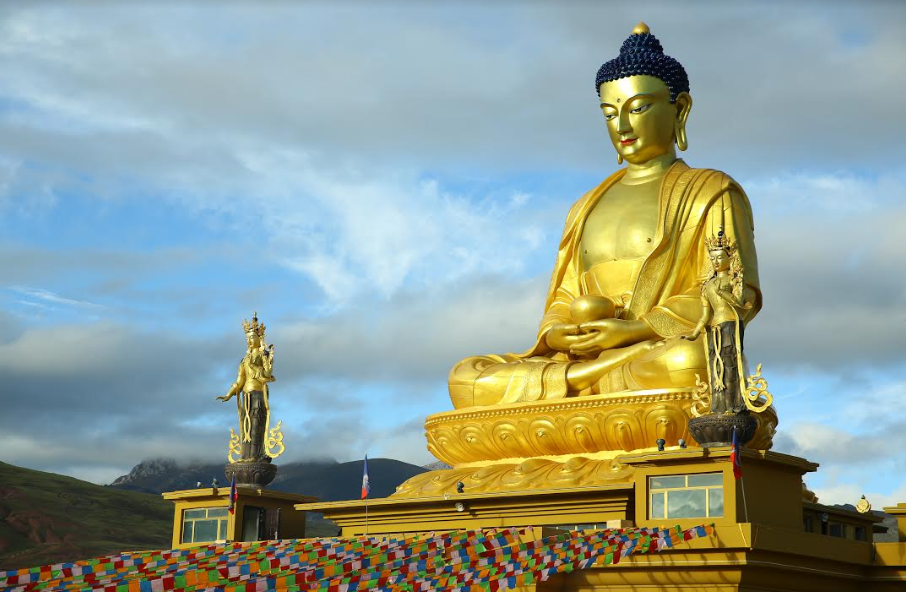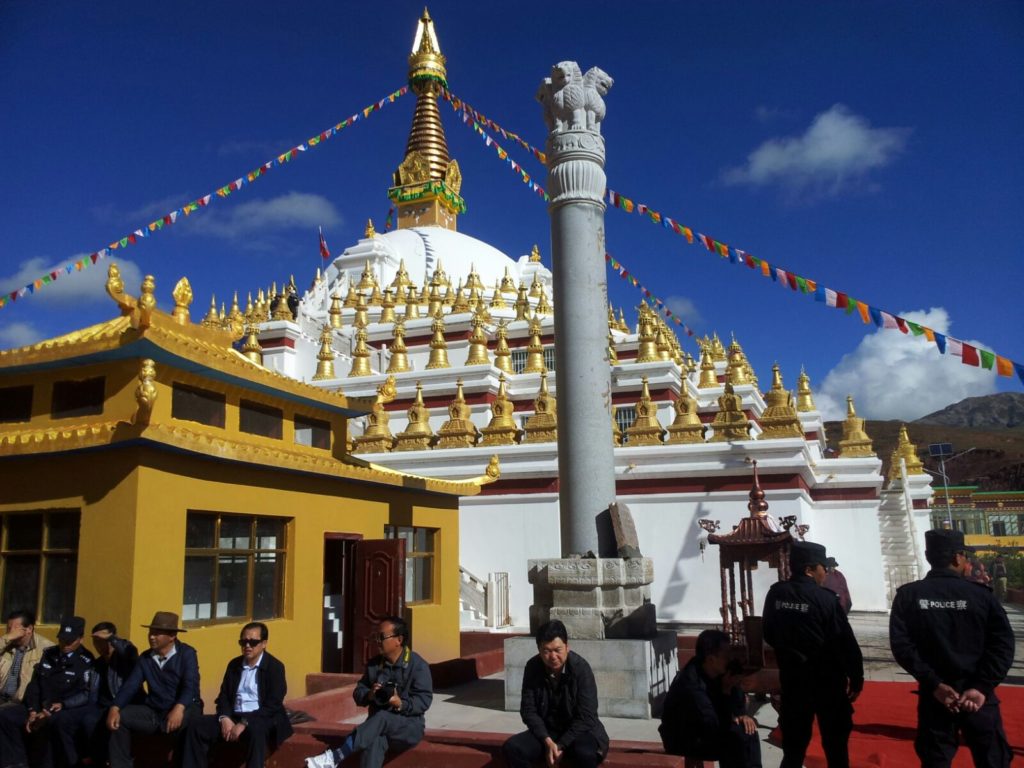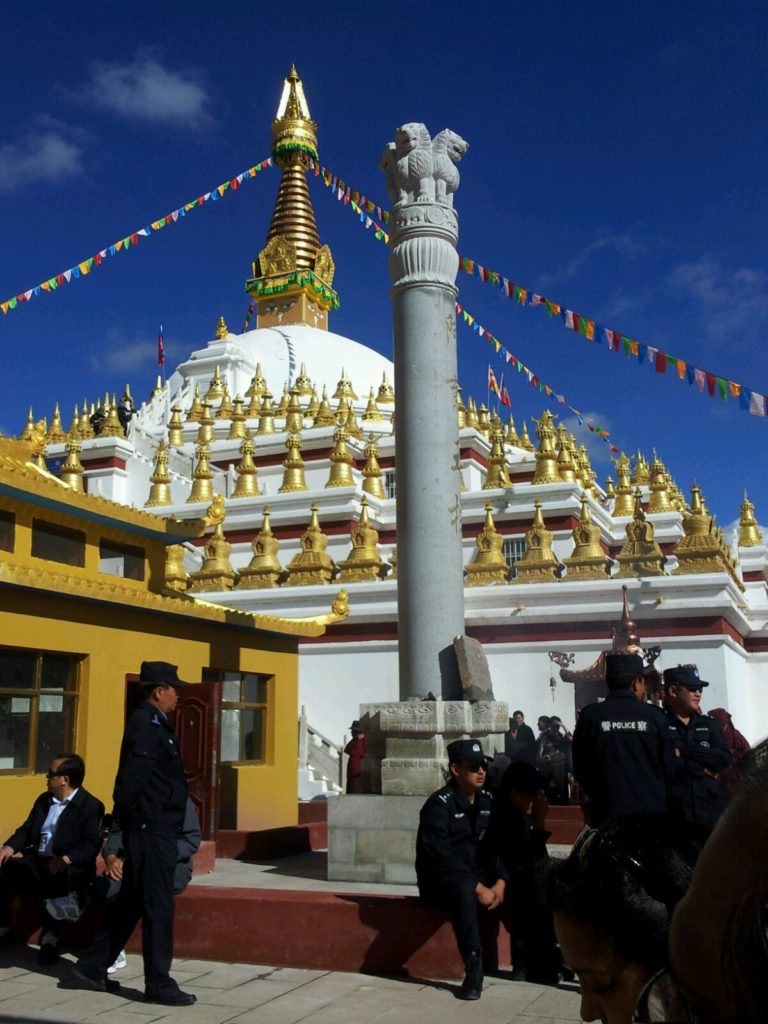Buddha Calling
May 10th 2017 is Buddha Poornima – the day Buddha attained enlightenment. A few years back I had an amazing opportunity to be part of a wonderful way to come up and close with Buddha. It is not often that one gets to visit an event that is historic and can easily be termed as once in a lifetime. And fortunately I had the unique opportunity to witness exactly that when His Holiness the Gyalwang Drukpa, spiritual head of the Drukpa Order inaugurated the millennia old Ashoka Stupa in Nangchen.
Back In Time
Since I was curious to know the origins of the stupa I did some enquiring with the monks (present in hordes at the event) and was explained the fascinating story of Buddha’s relics. According to the Buddhist scriptures, Emperor Ashoka commissioned the construction of this Stupa in order to spread the message of Buddhism. Legend has it that over 84,000 such Stupas were built to enshrine the relics of the Buddha and that 19 such Stupas were built in China. Incidentally, the Sariras is the Sanskrit name for relics that are the remains of a body part usually after cremation. In Buddhist context, sariras refers to the crystallization of solid remains of Buddha after his cremation. According to Buddhist records, Emperor Ashoka collected all these and stored them in pagoda-shaped shrines before sending them to different parts of the world. The Stupa at Nangchen fell to ruins over the last few centuries and the discovery of a pillar inscribed with the history of the Stupa at the site led to a revival of interest in the site. Devotees and practitioners resurrected the site under the leadership of the late Trulshik Adeu Rinpoche. After his untimely demise in 2007, His Holiness the Gyalwang Drukpa decided to work with Adeu Rinpoche’s nephew, Trulshik Satrul Rinpoche to complete the restoration with active support of Drukpa followers from all over the world. His Holiness the Gyalwang Drukpa, has been quoted as saying that the inauguration of the Ashoka Stupa in Nangchen is a historic moment for followers of Buddha everywhere. “It is a testament to the greatness of Emperor Ashoka who is considered to be the architect of Buddhism in the world. The restoration and commissioning of the Ashoka Stupa in Nangchen, China will go a long way in enshrining the principles of borderless humanism and spread the light of Buddha’s message globally.” Incidentally, while there are no verifiable records of the Nangchen stupa’s history, according to legend an old monastery once stood on the site of present-day Chamdo Monastery, to the west of the stupa, whose monks constructed a building to house devotees who protected the stupa.
New Vistas
Naturally, I was eagerly looking forward to seeing the restored version and I was certainly not disappointed at what I saw. A transcreated Ashokan pillar reflects the Indian connection – perhaps a sign that religion can still be the hope for better relations between India, China and Tibet. The new temple has a pillar with a stone containing an original inscription and is prominently placed between a renovated structure and the Stupa. In 2012, a 115-foot statue of the Amitabha Buddha was installed at the site as part of the restoration project, which was conceived a decade earlier when His Holiness met Singapore-based businessman Felix Lim Ah Yeong. The golden coloured Buddha statue also consecrated on this occasion is worth close to a whopping US$6 million and took 10 years for a Bhutanese sculptor to complete the model. After this, he died and the model was taken to a factory in Nanjing that specialises in making Buddha statues to be completed.
The Stupa
The restored Stupa is a grand structure in white and gold with an adjoining towering new golden Buddha statue and has five levels. The lowest level has a statue of the stupa’s protector Mahakala, a protector deity in Hinduism. The five levels of the stupas embody the five eras of Buddhism. It houses five million mini stupas made by local villagers over three years, 150,000 Mani stones and 160,000 engraved stone tripitakas containing Buddha’s teachings are other highlights. The next level has a mandala of Avalokiteshvara or Shiva. Each of the 500 mini stupas adorning the exterior hemisphere has a story of its own. The gold-plated stupa forms the cover for remnants of the original stupa which is kept in a glass case. The stupa is fronted by the remains of an original rock edict and has several of the excavated sculpted stones that establish its archaeological veracity. “The stupa itself documents the developments in the history of the stupa, all five stages of Buddha’s lives are depicted through murals, and the eight different types of stupas commemorate the eight-fold path of Buddhism,” explained monk Yeshe Namgyal who took us on a tour of the stupa.
Mystical Nangchen
What adds an aura to the stupa is the location – Nangchen. If you land in Beijing, you will need to take two flights (from Beijing to Xining and Xining to Yushu) and then hit the road for a 2.5 hour scenic drive through the countryside that reminds you of the scenes shot in Ladakh from the hit movie 3 Idiots. A county in the Yushu prefecture in Qinghai province, Nangchen, which lies close to the Tibet Autonomous Region at an altitude of 13,000 feet, was formerly one of five independent kingdoms in the traditional Tibetan region of Kham. What struck me was that the landscape change continually and the only common element were the sparse settlements between the tall mountains of the Tibetan plateau. Grazing yaks in barren hillsides, flowing streams, mountains covered with a carpet of green and a cool breeze is sure to invigorate the senses of urban souls unused to such clean air. In all a visit to this historic stupa and Nangchen will give you a break complete with spirituality in a virgin natural setting.
Fact File
GETTING THERE: Many airlines offers daily flights from Delhi to Beijing.
ACCOMODATION: Nangchen is a small province and accommodation is limited and basic. Try the Zurmang Hotel.
A version of this story appeared in Deccan Herald’s Sunday Herald here.



Hi, i was in Nangchen and was at Tsechu Monastery 10 late 2014, but did not get to venerate the Ashoka Stupa. I was wondering if you are kind enough to send some photos of the Ashoka Stupa and if i can share it publicly? Thank you.
With Metta, Jinxing
email: tanchyehin@gmail.com
Thanks will need to check the pics. However, please tell me where these pics are intended to be used?